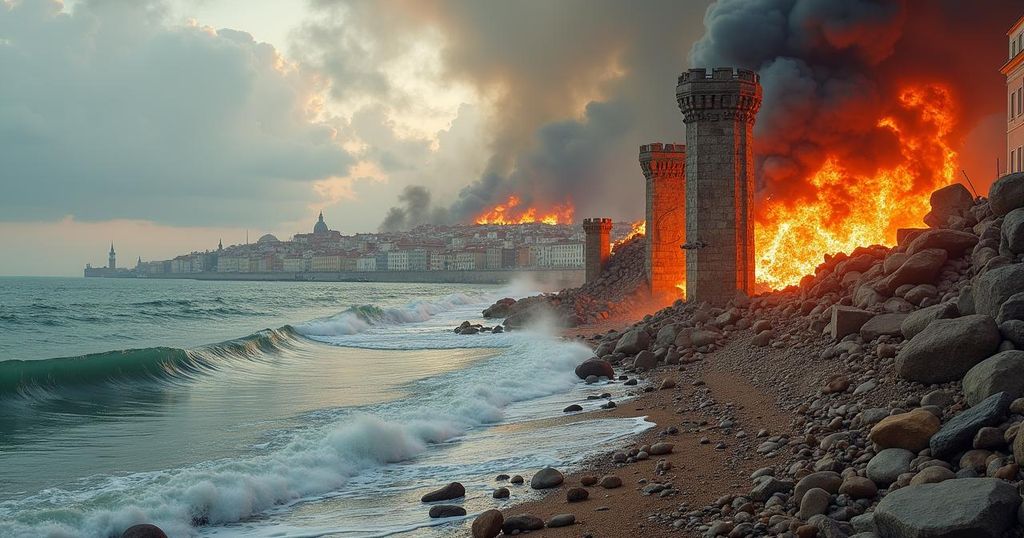The Lisbon Earthquake of 1755: A Pivotal Seismic Event in European History

On November 1, 1755, a catastrophic series of earthquakes struck Lisbon, Portugal, resulting in approximately 60,000 deaths and extensive destruction due to collapsing buildings and subsequent fires. The quake generated a tsunami, affecting regions as far as Martinique and Algiers. This event prompted significant cultural reflections and changes in disaster preparedness in Europe, laying the groundwork for contemporary urban planning practices.
The Lisbon earthquake of 1755 represents one of the most catastrophic seismic events in European history. On November 1, 1755, a series of earthquakes struck the port city of Lisbon, Portugal, resulting in extensive destruction and an estimated death toll of approximately 60,000 individuals. The timing of the earthquake coincided with All Saints’ Day, leading a significant number of the population to be in churches, which ultimately crumbled under the intense tremors, resulting in countless injuries and fatalities among worshippers. Geological studies have indicated that the primary cause of this devastating earthquake was faulting along the mid-Atlantic tectonic plate boundaries. The seismic event also triggered a tsunami, with waves reaching heights of approximately 20 feet (6 meters) in Lisbon and an astonishing 65 feet (20 meters) in Cádiz, Spain. Remarkably, these tsunami waves traversed over 3,790 miles (6,100 km) to Martinique in the Caribbean, where they reached a height of 13 feet (4 meters) above mean sea level. Detrimental effects were observed as far away as Algiers, approximately 685 miles (1,100 km) from the epicenter. Following the initial quake, fires ensued throughout Lisbon, lingering for about six days, further compounding the devastation and loss of life. Artistic and literary representations of this disaster endured for centuries, solidifying the Great Lisbon Earthquake as a pivotal moment in the history of Europe, influencing social, political, and scientific thought for generations.
The Great Lisbon Earthquake not only caused immediate physical destruction and loss of life but also had profound implications for the philosophical and political climate of Europe at the time. The event sparked discussions about natural disasters and divine punishment, leading figures such as Voltaire to critique religious interpretations of calamity in their writings. Furthermore, the destruction prompted significant changes in urban planning and disaster preparedness, as governments re-evaluated their approaches to building standards and public safety in the face of such disasters. This seismic disaster catalyzed a shift in European thought, contributing to the development of modern geological science and emergency response strategies.
In conclusion, the Lisbon earthquake of 1755 stands as a monumental tragedy that reshaped not only the physical landscape of Lisbon but also the intellectual and political landscape of Europe. With a substantial death toll and extensive destruction compounded by a devastating tsunami and subsequent fires, the earthquake profoundly influenced public discourse on disasters, the nature of faith, and the resilience of society in the face of natural calamities. The historical ramifications of this event continue to resonate, making it a critical study not only in geology and disaster response but also in the philosophical discourse surrounding human resilience and societal reform.
Original Source: www.britannica.com








